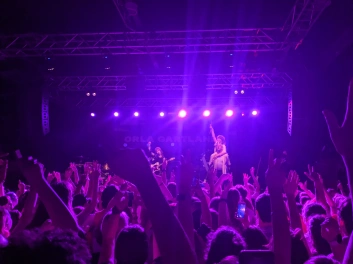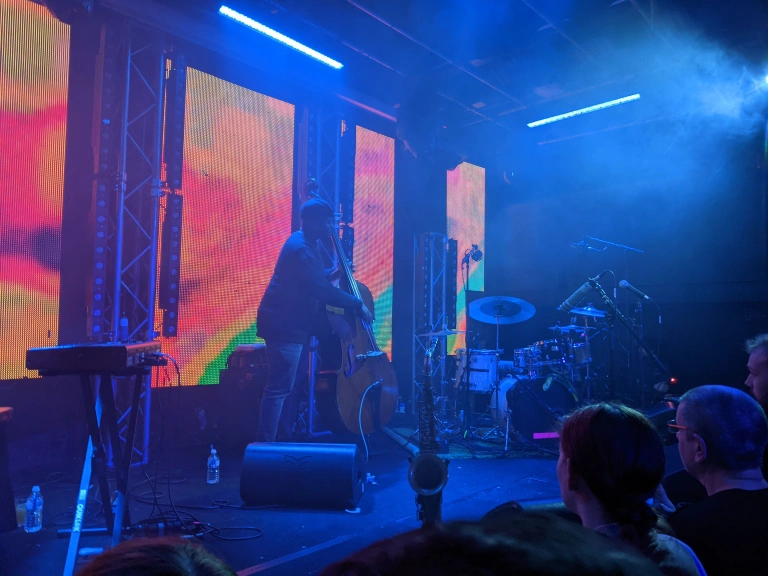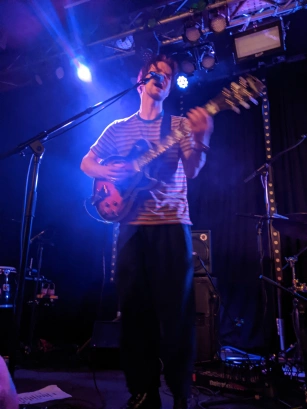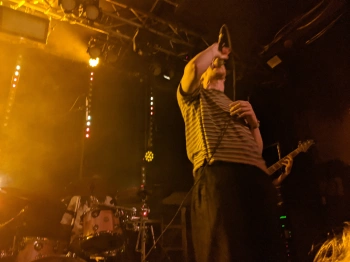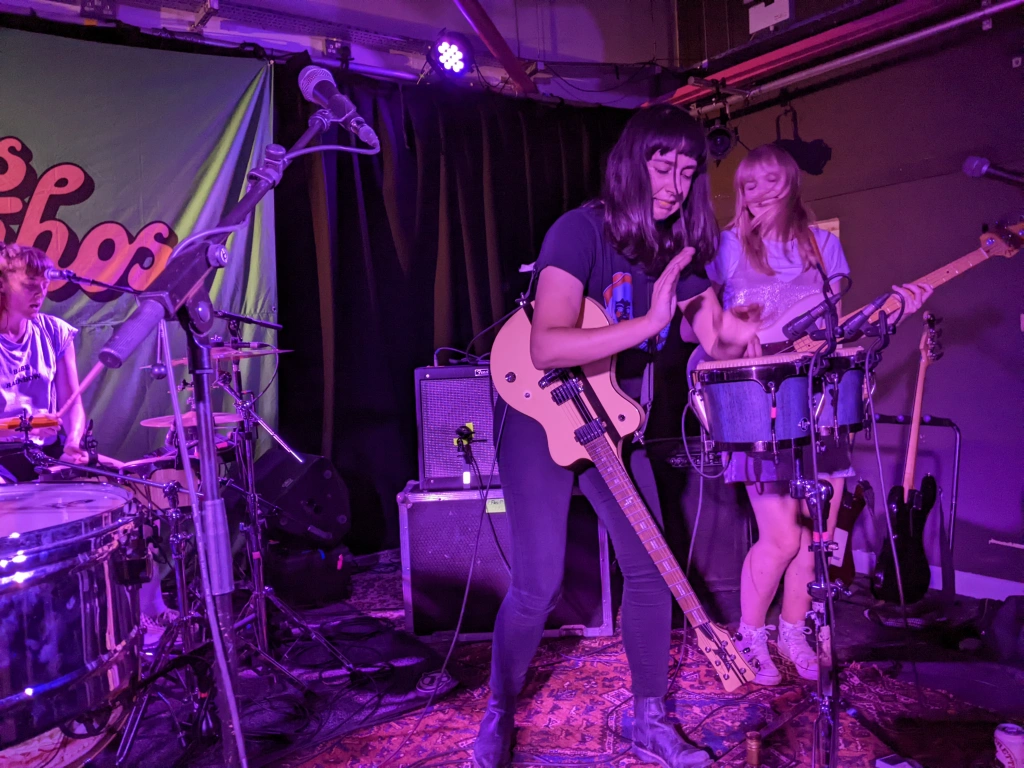The jazz group that set the Mercury Prize alight last year return with an album that goes all in on infectious dance grooves. Their knack for melody seems to have been forgotten in the party, but this bloated record does conclude with the most moving track of this band’s career.
The level of study I devote to albums reviewed on this blog varies, but sometimes, like with this latest Ezra Collective album, I take my journalistic duties to give the entire record a fair hearing seriously: I sit down in a darkened room save for a dim desk lamp, scribbling details of every track in a notepad and staring blankly at Spotify as the highlighted song title gradually works its way down the track list. It took about 20 minutes of listening to Dance, No One’s Watching before I properly read the album title writ large across the top of the screen. Alone on a rainy night in my bedroom, it felt like an instruction addressed directly to me. In fact, cowering over a desk is the exact opposite effect of Ezra Collective’s third album which is, unsurprisingly, a heartfelt ode to the power of dancing.
Ezra are labelled a jazz act – and are the most commercially successful act in the nebulous genre of UK jazz by some margin – but anyone who’s seen the five Londoners take to a stage since their emergence five years ago will know compulsive dance grooves have always been an essential part of this band’s appeal. Their performance at last year’s Mercury Prize (fittingly of a song called Victory Dance) had the attendees in the cabaret seating setting aside their glasses of champagne to clap and frug along to the infectious Latin groove like the band members themselves. It was a joyful musical fireworks show that seemed to render the competition a forgone conclusion. Ezra Collective were destined to be the Mercury Prize’s first jazz champions, and they showed up ready to claim the trophy.
Unfortunately their follow-up album, Dance, No One’s Watching lacks a track quite as thrilling as Victory Dance, but there’s no shortage of peppy Afrobeat grooves to move your hips to. The standout is Ajala, named after a legendary Nigerian journalist who was so busy with his travels his name became Yoruba slang for someone who can’t sit still. It is a fittingly up-tempo, restless number, with Ife Ogunjobi and James Mollison’s skipping melodies played in blunt unison – Ezra Collective are a band far more concerned with delivering a straightforward good time than trying any fiddly counterpoint or melodic harmonies. Ajala has groove in buckets, but what it’s lacking is everything else that makes for a good jazz composition, namely an interesting B section (here the melody simply drops out for 16 bars) and a wild solo.
Ajala is far from the only track where Ezra Collective’s tunnel vision on producing a danceable groove leaves the melodies feeling underwritten. N29 is essentially just one (admittedly very funky) bass riff lacking in hardly any musical development at all, let alone a melody to hold on to. Opener The Herald starts promisingly enough, but again it’s as if they’ve forgotten to write half of the chorus, and Ogunjobi’s trumpet solo is given no room to grow. The devotion to a rock solid groove is admirable – and brothers Femi and TJ Koleoso are without a doubt one of the tightest drum and bass duos in the business – but it should be possible for a funky, repetitive groove and interesting harmonic shifts to exist in the same song.
Intriguingly, Yazmin Lacey and Olivia Dean’s featured tracks – two of the very finest voices on the UK jazz scene – offer a relatively restrained take on the dance-focused thesis. Lacey’s smoky tones are a fine match for the tender horn lines on God Gave Me Feet For Dancing, but with no-nonsense lyrics like “Give me bass line / Give me dollar wine” it’s odd the band don’t rise above a muted throb all song. Dean’s track, No One’s Watching Me is slinkier and sexier and features Ogunjobi’s best solo on the record – each note placed with unusual restraint and care – although Dean’s chorus is scant.
Further down a bloated track list, Shaking Body and Expensive offer a purple patch. The former is pure Ezra Collective joy and a natural successor to Victory Dance, with a Latin hook bubbly enough to justify its many repeats. Mastermind of the keyboard Joe Armon-Jones offers luscious jazz voicings typical of his brand of frantic genius, and Femi Koleoso’s hammering of the ride cymbal in the chorus is a joy to behold. Expensive improves on the light-footed Afrobeat of the record’s first half with intelligent, patient sax and trumpet solos that prove Ogunjobi and Mollison have done their jazz homework, moving beyond the crowd-pleasing screeches found on their most raucous party starters.
The penultimate track appears at first to be some surplus jazz musings from Armon-Jones on piano, but the song is called Have Patience for a reason – Everybody immediately follows, a magnificent album closer and one of the most beautiful tunes the band have ever penned. In an album lacking in strong melodies, here is a beauty: an elegant, sighing rise and fall, shimmering within Armon-Jones’ textured piano chords before emerging in a solemn trumpet line and, rousingly, a distant choir. Before long, Obunjobi and Mollison are up to what they do best – rapturous, euphoric improvisations that come together and fall apart again like two birds in flight. It’s a piece ripe for crowd participation and a poignant marker of how far they’ve come: a band with collective in the name, experts at uniting audiences from summer festivals to glamorous awards shows through dance and crowd participation. Dance, No One’s Watching may not go down as their finest record, but that precious Ezra Collective spirit remains alive and well.

